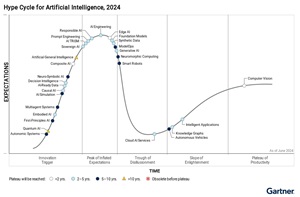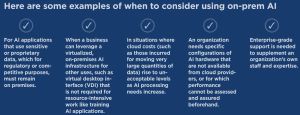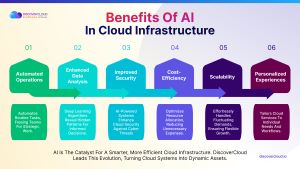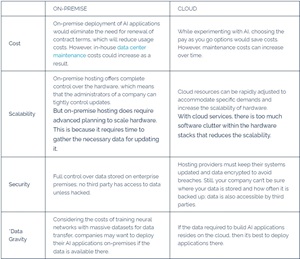News
Cloud Giant AI Hegemony Shows Cracks
Microsoft's partnership with OpenAI led to enterprise AI leadership, soon accompanied by fellow cloud giants Google and AWS. The "Big 3" took turns one-upping one another in speeds/feeds, services, copilots and associated products, but the cloud AI hegemony may be cracking.
The latest evidence comes from a Gartner "Hype Cycle" research report that shows "cloud AI services" at the lowest point of that cycle, the "trough of disillusionment" wherein the original excitement wears off and early adopters report performance issues and low ROI.
 [Click on image for larger view.] Hype Cycle for Artificial Intelligence, 2024 (source: Gartner).
[Click on image for larger view.] Hype Cycle for Artificial Intelligence, 2024 (source: Gartner).
"Cloud AI services have regressed on the Hype Cycle since last year, due to the number of GenAI-based cloud AI services that have come to market," Gartner said. "Vendors and end users of these services have experienced problems with service capacity, reliability, model update frequency and cost fluctuation, which may, however, be considered growing pains."
The Case for On-Premises AI
The debate over cloud-based AI vs. on-premises AI is basically just an extension of the debate between cloud IT vs. on-premises IT. Use cases for on-premises AI, according to an Nvidia white paper on the Supermicro site titled "How On-Premises Deployment Can Overcome Six Critical AI Challenges," are illustrated here:
 [Click on image for larger view.] When to Consider On-Prem AI (source: Supermicro/Nvidia).
[Click on image for larger view.] When to Consider On-Prem AI (source: Supermicro/Nvidia).
"Public cloud providers offer scalable AI infrastructure, as well as tools for collecting data, creating, training, and managing AI applications," Nvidia said. "However, on-premises AI can deliver the greatest business benefits most quickly and cost effectively."
The Case for Cloud-Based AI
General cloud benefits such as scalability, efficiency, cost and so on translate to AI implementations, and there DiscoverCloud illustrated the benefits of AI in cloud infrastructure:
 [Click on image for larger view.] Benefits of AI in Cloud Infrastructure (source: DiscoverCloud).
[Click on image for larger view.] Benefits of AI in Cloud Infrastructure (source: DiscoverCloud).
Park Place Technologies, meanwhile, provided a comparison of "Cloud vs. On-Premise: Where to Deploy AI Applications":
 [Click on image for larger view.] Where to Deploy AI (source: Park Place Technologies).
[Click on image for larger view.] Where to Deploy AI (source: Park Place Technologies).
From AI in the Cloud to Cloudy AI
There has long been talk of "cloud repatriation" -- or reverse cloud migrations -- see InfoWorld's 2022 article "Some cloud-based AI systems are returning to on-premises datacenters" as one example.
That notion actually goes back even further, before the dawn of ChatGPT, as shown in the 2020 Medium article, "Making the AI Journey from Public Cloud to On-prem," which discusses "Lessons learned from a deep learning team that outgrew experiments in AWS."
However, some sources indicate any cloud/AI breakup might just be a shift to a different kind of cloudy AI that extends across cloud platforms, edge devices, datacenter computers/devices and into the very DNA of the tech we all use every day.
One way of AI escaping its cloud-computing lock-in is "vertical AI" where solutions come in customized version tailored for industry-specific business needs.
"Now the rise of large language models (LLMs) has sparked the next wave of vertical SaaS as we see the creation of new LLM-native companies targeting new functions and at times industries that were out of bounds for legacy vertical SaaS; notably Vertical AI applications target the high cost repetitive language-based tasks that dominate numerous verticals and large sectors of the economy", said the recent Bessemer Venture Partners State of the Cloud 2024 report.
Bessemer, approaching things from the financial side since it's a venture capital firm, points to a huge upside for vertical AI as compared to legacy vertical software:
 [Click on image for larger view.] Big Vertical AI Upside (source: Bessemer Venture Partners).
[Click on image for larger view.] Big Vertical AI Upside (source: Bessemer Venture Partners).
"As the fast-evolving multi-modal capabilities of LLMs allow us to extend and enhance our text, visual, and auditory senses in previously impossible ways, we're seeing potential for disruption open up in every category of legacy consumer cloud," Bessemer said.
Of course, the spread of AI beyond its current cloud-provider base dominated by AWS, Google and Microsoft won't squeeze those companies out of the AI space; they'll just adapt and go with the flow, as the cloud certainly isn't going anywhere.
AWS, for one, doesn't appear worried.
As CRN reported in a recent article about an AWS earnings call, company CEO Andy Jassy is excited about AI's potential in the AWS cloud, with his optimism shown in the headline, "Amazon CEO: 85 Percent Of 'IT Spend Remains On-Premises,' Gen AI Will Fuel AWS Cloud Sales."
Jassy said: "We remain very bullish on AWS. We're at $100 billion-plus annualized revenue run rate, yet 85 percent or more of the global IT spend remains on-premises. And this is before you even calculate gen AI, most of which will be created over the next 10 to 20 years from scratch and on the cloud. There is a very large opportunity in front of us."
Microsoft and Google probably aren't worried either, though they may be sharing bigger slices of the AI pie as the tech branches out and comes from the likes of Anthropic, Perplexity, IBM, Oracle, Meta, Apple and as-yet-unheard-of newcomers. And, of course, Nvidia, whose AI-friendly processors made it the world's richest company for a while.
Other companies not normally associated with AI are also getting in on the lucrative action, trying to lure cloud customers to their in-house systems, a case in point being Dell's take on "Investing in GenAI: Cost-benefit analysis of Dell on-premises deployments vs. similar AWS and Azure deployments," just published in May. Unsurprisingly, it concluded: "GenAI workloads on premises, either in a traditional Dell solution or using a managed Dell APEX pay-per-use solution, could significantly lower your GenAI costs over 3 years compared to hosting these workloads in the cloud."
Bessemer, meanwhile, doesn't have any ready-made solutions to make up your mind for you but it does have questions yet to be answered. "So does the hype around the AI Cloud exceed reality?" Bessemer wondered in the conclusion to its recent report, circling back to cloud AI now being in Gartner's trough of disillusionment on the Hype Cycle.
"Are we destined for a reckoning in the next year or two when we admit the promise of AI nudged cloud VCs over our skis? Or is AI threatening to shatter 'Amara's law'? The first tech wave where reality outpaces the insane hype?"
About the Author
David Ramel is an editor and writer at Converge 360.